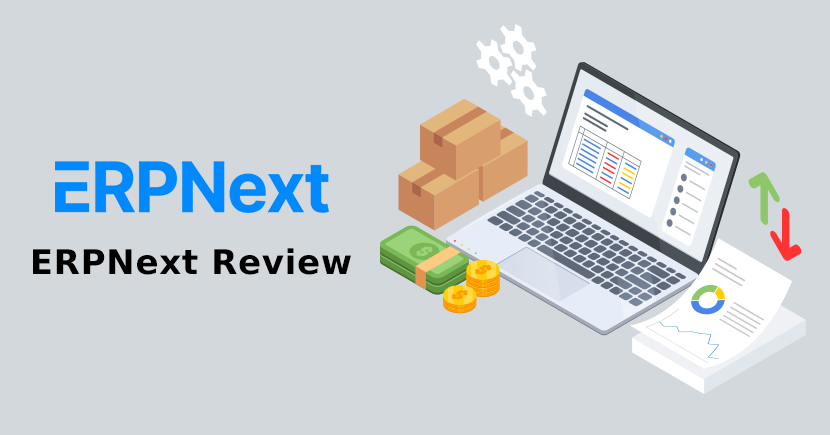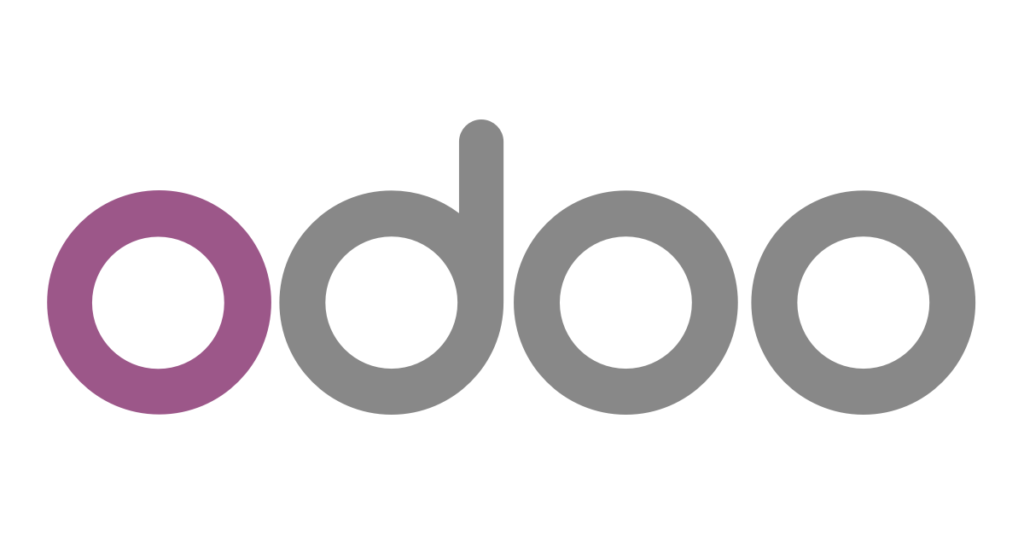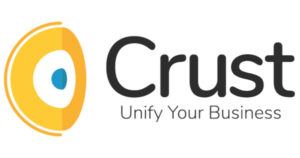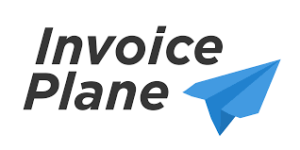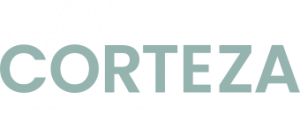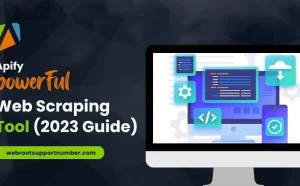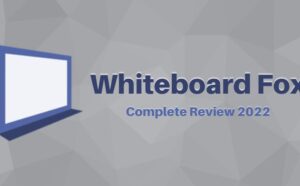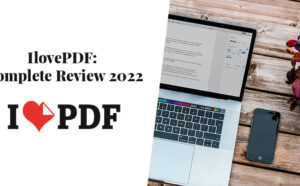Introduction
ERPNext is a Frappe developed open-source ERP software solution. This allows a variety of industries to manage multiple parts of their operation from a single platform. The product is currently used by more than 5,000 organizations across industries including manufacturing, retail, distribution, education, health, not-for-profit, and agriculture.
ERPNext is an agile workspace that links virtually every procedure and process throughout an organization to a single database, allowing users from different departments to access the same information source and preventing costly repeat tasks. Frappe has been in operation for more than a decade and offers a line of free-to-use, open-source software solutions.
ERP systems, which stand for Enterprise-Resource Planning, are necessary for every modern company and can handle all aspects of the business. The main problem is that ERPs are complex and expensive due to the costs of the system itself, hardware, and consulting fees.
In this situation, a web-based ERP solution is cheaper to implement and maintain. ERPNext is an excellent example of software that will enable a company to organize and manage the work of each division.

Image Source: ERPNEXT
ERPNext is a free and open-source web-based system for small and medium-sized enterprises that provides businesses with support in the areas of accounting, project and task management, sales, purchase, inventory, CRM, administration, human resource management, manufacturing, and even the Internet.
This system is best suited to the manufacturing, retail, and distribution sectors, as it combines extensive functionality into a single platform for easy administration.
ERPNext is a fully open-source ERP system suitable for companies of all sizes (SMBs to Enterprises) in a broad range of industries, including manufacturing, distribution, services, retail, education, healthcare, and others.
The system includes special modules specific to the sectors mentioned above, along with core modules such as accounting, project management, inventory, human resources, sales, purchase, QMS, and asset management.
ERPNext is an ERP system that allows users to monitor and manage a wide range of core business functions from a central software environment, according to the solution’s website. ERPNext has more than 1,000 features to help users with workflows that include manufacturing, sales, and web development.
With a series of intuitive dashboards and Kanban-style boards, users can create more productive and collaborative work experiences, while keeping employees updated on all upcoming deadlines and benchmarks throughout the operation.
What is ERPNext?
ERPNext is an open-source business system for small, medium, and large enterprises that can be implemented with a minimal budget. It’s ideal for start-ups as they have limited resources, and it has comprehensive processes to streamline retail management, monitor inventory, handle customers and increase ROI.
It includes a multilingual website builder that can handle both content and e-commerce needs, as well as integrations with Google, Slack, PayPal, Shopify, and more to centralize business operations.
The product can be hosted on the user’s servers or self-hosted, and users can run it in the cloud or on-premises. Users can access it on the go through a mobile application.
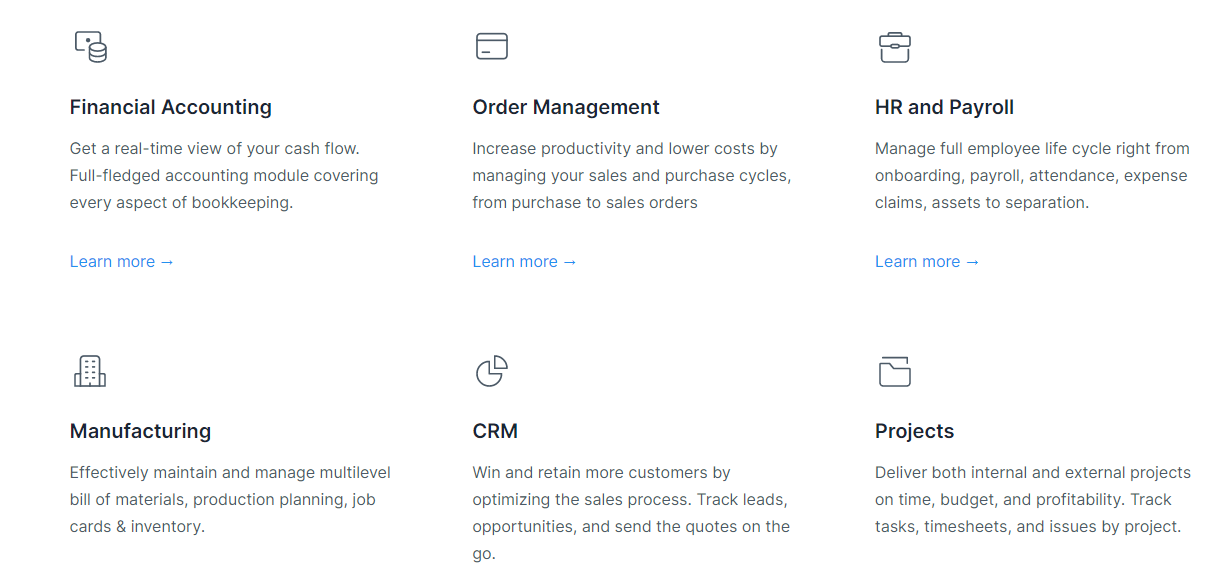
Image Source: ERPNEXT
ERPNext, a Python-based ERP software package, began as a generic ERP platform. It follows a modular architecture that has evolved tremendously over the years, providing the software with the capability to accommodate a wide variety of businesses thanks to the many improvements made to the source code.
The platform can now be used on-premise or in the cloud. ERPNext is a business tool that seamlessly integrates into a central platform for easier and more efficient management for retailers and wholesale industries, distribution, manufacturing, education, services, agriculture, healthcare, hospitality, and nonprofits.
ERPNext is built using Python and MySQL as the database backend, while the Web App Framework ( Frappe ) is the separate platform for the development and deployment of rich web applications.
This ERP has a Model-View-Controller architecture that, in combination with metadata modeling tools, allows users to tailor the system to meet the unique needs of their business without the need for custom programming. Users can buy ERPNext as Software as a Service or host it themselves.
ERPNext includes a large number of features that facilitate the integration of ERP into nearly any business discipline, including a central accounting dashboard that lists key metrics like outgoing and incoming bills, payments, and profit-and-loss statements at a glance.
ERPNext offers full accounting capabilities as well as a comprehensive set of financial management and forecasting tools. The application also has a complete human resources management (HRM) suite that includes integrated payroll, recruiting and talent acquisition, employee education, and key performance indicator (KPI) tracking.
This software includes an easy-to-use website builder so users can quickly establish an online web presence and grow their businesses with mobile-friendly site designs, blogging capabilities, search engine optimization (SEO) management, and e-commerce support.
8 Business Worthy Benefits Of ERPNext
ERPNext users can enjoy a fully integrated workspace that combines many different areas of operation with automated data entry capabilities. After a sale has been completed, inventory counts, general ledgers, and so on are automatically updated by the system, largely eliminating error-prone manual data entry procedures and allowing users to save time.
A further benefit is the system’s robustness: ERPNext offers a wide variety of features while maintaining simple design principles with clear and uncluttered dashboards that were designed with ease of use in mind.
1. Cheaper
It is a low-cost software solution that targets smaller companies with limited resources. Users can choose a free or a premium package that includes priority technical support or onboarding support as added features.
2. Automate Stock Replenishment
The solution automatically generates a material request when inventory falls below a certain level, which allows users to replenish inventory at the right time, reducing stock exhaustion risks.
3. Improved Customer Management
Provide credit limits, view receivables, and total billing amounts, and analyze average customer revenue. This simplifies the way customers are managed and businesses can make better decisions.
4. Highly Customizable
Easily add custom fields to the form, automatically retrieve values to modify form behavior, or hide certain fields based on user roles, all of which can be used to gather relevant data from vendors or clients.
5. Multi-Store Retail Management
Register a new store with a few clicks and monitor several factors, including expenditures, stock movements, profit, and loss, to evaluate the overall profitability of the business.
6. Muti-Lingual Retail Management
Facilitates the use of local language to spread the solution across different geographic regions, allowing different groups of users to become familiar with the product.
7. Simple and Easy To Use Interface
When considering the number of modules, tools, and capabilities available, ERPNext’s ease of use is rather surprising. It is designed to be simple and cost-effective for non-technical users. This is exactly what makes the software best suited to small and medium-sized businesses.
ERPNext is designed to be your one-stop resource for easy and efficient management, offering an extensive range of features via a single, unified platform. It eliminates the need for in-depth or custom programming largely because of its Model-View-Controller system architecture and metadata modeling solutions.
8. Advanced Accounting Tool
ERPNext’s accounting module is one of the company’s many selling points because it supports multiple currencies.
Add this to ERPNext’s reporting, tax, and financial reconciliation capabilities, and you’ve got an all-in-one solution that will greatly benefit your finance and accounting departments.
For companies looking to increase their market share internationally, ERP software can be a valuable resource.
ERPNext Features
ERPNext is an open-source ERP tool designed to support organizations from multiple sectors including manufacturing, distribution, retail, education, healthcare, agriculture, and nonprofits.
Administrators can manage accounting, onboarding, payroll, production, sales, purchase, and CRM processes from a central dashboard. It also helps managers plan projects, track tasks, create estimates of timeframes, store documents, and work with team members in real-time.
ERPNext proves that ERP does not need to be complicated and weighty to be effective. ERPNext’s functionality is extremely robust out of the box, as the open-source platform offers a huge number of options for each solution.
The following should give you a better understanding of just how extensive this ERP system is:
– Accounting Module
ERPNext offers an accounting solution that gives you real-time views and analysis of your organization’s cash flow. This is a full-featured accounting module that covers virtually all aspects of bookkeeping and financial management. Point-of-sale (POS) support, sales invoicing, accounts chart, account dimensions for monitoring project financials, quotation, pricing, multi-currency, flexible tax rules, purchase orders, double-entry bookkeeping, and a full suite of accounting reports are among the modules’ core features.
– Next Level Billing Management
Multi-currency and multi-country support, powerful accounting, a company’s chart of accounts, and cost centers, a broad range of reports, built-in tools for bank and payment reconciliation, and payment vouchers.
– Asset Management Module
ERPNext’s asset management module allows you to keep track of your company’s assets, and track value adjustments, and depreciation while managing and storing data. Its primary functions include asset movement tracking, maintenance management, and asset sales and purchases.
– CRM Module
It allows your team to track leads and sales opportunities, as well as send quotes on the go, by properly optimizing sales. Email synchronization, email campaigns, opportunity management, lead management, sales pipeline, and sales stage tracking are some of its main features.
– Advanced Sales Reports and Management
Give various reports on all company sales, estimates, support requests, newsletters, and management and communication with both current and potential customers.
– HR and Payroll Module
ERPNext’s human resources and payroll module lets you manage the entire employee lifecycle, from recruitment and onboarding to attendance and payroll, right through to termination. Attendance and leave tracking, recruitment and onboarding, contract management, payroll, expense claims, and more are among the modules’ key features.
– Stock / Inventory Management Module
This module is designed for retail and wholesale businesses and includes inventory management with a hierarchical location tree. It has features including price lists, packing slips, stock level reporting, stock reconciliation, stock items, and warehouse management.
– Manufacturing Module
It is one of the industry-specific modules, which also includes education, healthcare, agriculture ( beta ), hospitality ( beta ), and not-for-profit ( beta ) sectors.
The manufacturing module lets you manage a multi-level Bill of Materials as well as strategically plan and monitor production with Work Orders.
Other capabilities include capacity planning, operations management, production plans, job cards, subcontracting, and the ability to monitor work progress at each workstation.
– Project Management Module
The Project Management module lets you take care of both internal and external projects, and will help you manage your team more effectively, assign them tasks, monitor their progress, and ensure that every aspect of the project development process is in order so you can deliver on time.
Time tracking, project reporting, projects, project templates, tasks, Gantt charts, Kanban boards, and the customer portal are just some of the features and tools of the project management module.
– Support and Service Management Module
This module allows you to dramatically enhance your helpdesk services and deliver a better service for your staff and customers.
Use the system’s integrated knowledge base and intuitive issue tracker to improve customer service experiences, using features like issue tracking, maintenance schedules, and more.
This module allows you to easily track customer tickets, monitor server quality, and monitor personnel response and resolutions. Service level agreements and warranty claims are among the functions offered.
– Sales and Purchases Module
With ERPNext’s sales and purchases module, you can increase your productivity while keeping costs low by controlling your sales and purchase cycles from the purchase stage to sales orders.
The selling section covers a wide range of sales operations, including quotations and delivery tracking. On the other hand, the buying aspect encompasses the acquisition of materials, purchase orders, and supplier quotes.
– Integration and Customization Module
The ERPNext customization and integration module is perfect for combining customization and integration since it is an open-source system. With print formats, custom scripts, custom fields, and more, you can easily customize your ERPNext platform.
In addition, ERPNext features built-in integrations for different countries, including the United States, Italy, India, and the UAE. Google, Amazon Web Services (AWS), various payment gateways, and more are among ERPNext’s built-in integrations.
ERPNext also has customization tools and resources for developers who wish to contribute to this ever-growing open-source ERP solution. You can learn how to share your experience and contribute to this growing community, or perhaps design and create your extension.
– Portal and Website Module
ERPNext’s Website and Portals module provides users with a feature-rich content management solution for web pages, blog sites, and online forms, allowing you to manage your business website, shopping cart, web forms, product and service catalog, and more through the platform’s built-in portal.
The ERPNext Portals will allow you to interact directly with your customers and suppliers, by providing them with a direct link to submit bids and shop online for your products and/or services.
– Flexibility
Metadata modeling enables developers to add specific features to applications without programming.
Other Useful Features
- ERPNext is an online tool that can be used on a wide variety of platforms and devices since it is cross-compatible.
- The enhanced user interface is designed to be intuitive, productive, and easy to use.
- Calendar, simple social network, and messaging service, built-in to-do lists, projects, and time log entry, with office suite integration.
- The Production Planning Tool helps you plan production and materials ahead of time.
- With their product catalog and shopping cart, users can build a fully functional and styled website.
ERPNext’s Pros
- Many users found the solution affordable.
- Drilldown search: A few people reported that the system’s search function was useful for quickly locating the information needed for the task at hand.
- ERPNext was reliable, and reviewers reported rarely running into system downtime.
- Open-source ERP product: Many users loved the flexibility of customizing the open-source ERP product to meet their organization’s unique business requirements and workflows.
- There was an active user community that provided tips and tricks on how to use the system more effectively, according to some reviewers.
- Easy cloud access: Customers liked that they could access their cloud-hosted work environments from virtually any internet-connected device.
ERPNext’s Cons
- Difficult in upgrading: Many users complained that upgrading to new versions of ERPNext was a complicated process.
- The customer support isn’t knowledgeable and friendly based on a lot of the user reviews.
However, the majority of reviewers seemed to be satisfied with the product. Many users claimed that the software was extremely easy to use, incredibly customizable, and rarely encountered downtime.
ERPNext Pricing
While ERPNext’s on-premise/self-hosted version is completely free, the cloud-based version has two paid plans. The Standard plan starts at $10 per user per month and has an annual subscription of $110.
The Pro plan starts at $25 per user per month or $275 annually, and the vendor is offering a 14-day trial for both plans. The Standard plan requires a minimum of five users, and it includes hosting, all modules, standard support, and up to three hours of onboarding support.
The Pro plan requires a minimum of 10 users, and it includes everything from the Standard plan with up to five hours of onboarding support. The self-hosted version can accommodate an unlimited number of users, and includes an account manager, priority support, and enterprise-class onboarding.
ERPNext pricing is governed by two plans: a free-for-ever Open-Source plan that includes all modules, but does not include customer service or security updates, and a Managed Hosting plan starting at $10 per site per month. ERPNext offers three enterprise-level pricing options:
- Basic: $12,000 yearly, 20 users
- Professional: $24,000 yearly, 50 users
- Advanced: $38,400 yearly, 100 users
However, you can visit the ERPNext pricing page for more information about what is included with each plan.
Best 8 ERPNext Alternatives
ERPNext is a free and open-source integrated Enterprise Resource Planning (ERP) software designed by Frappé Technologies Pvt. Ltd. and is based on the MariaDB database system and a Python-based server-side framework.
It is a popular CRM system in the business and commerce sector. There are more than 100 ERPNext alternatives available for a variety of operating systems, including Windows, Linux, Online/Web-based, Mac, and Android.
Odoo, which is both free and open-source, is the best alternative. Dolibarr, EspoCRM, Crust CRM, and InvoicePlane are all other ERPNext alternatives. ERPNext alternatives are typically CRM systems but may also include invoicing software or budget management tools.
1. Odoo
Odoo (formerly OpenERP) is a suite of Python-based open source business applications that is marketed under the AGPL license under the Open Core software business model. It is used by 2 million users around the world to manage companies of all sizes.
2. Dolibarr
Dolibarr ERP & CRM is a modern and easy-to-use open-source web software package for managing your business (customers, invoices, orders, products, stocks, agenda, e-mails, shipments).
3. EspoCRM
EspoCRM is an Open Source CRM (Customer Relationship Management) software that allows you to see, enter, and analyze all of your company relationships, regardless of the type – people, companies, projects, or opportunities – EspoCRM is a free open source CRM (Customer Relationship Management) software.
4. Crust CRM
Crust CRM is a 100% free and open-source CRM that is fully supported and offers rich dashboards, automation rules (workflows), collaborative team messaging, and more. The low-code development platform included in the Kit allows you to customize your CRM.
5. Invoice Plane
InvoicePlane is a self-hosted open-source application that can help you manage quotes, invoices, clients, and payments. The application has a range of options, templates, and settings that can be customized to your invoicing experience.
6. Corteza CRM
Corteza CRM is a free and open-source customer relationship management platform with a cloud-scalable architecture and complete modularity. With several defining features, Corteza CRM enables any company to create a CRM solution that best fits their needs.
7. Skrooge
With KDE 4. X as its operating system, Skrooge makes it easy to manage your finances. It’s one of the most powerful ways to record, track, and analyze your expenses, thanks to its wide range of features.
8. Quickbooks
Quickbooks is a small business accounting software package that includes both on-premises as well as cloud-based versions. It has a very intuitive interface.
Ordinary tasks, such as creating invoices and obtaining cash flow reports, can be done with a few clicks in a matter of seconds. The real-time reports and dashboards allow you to control your cash flow and see where the money is going.
Quickbooks offers most accounting services a business may need, including handling account receivables or payables to Fixed Asset Management.
Conclusion
ERPNext is an amazingly feature-packed generic ERP solution that can be used by SMBs and organizations across different industries. Its flexibility, ease of use, integration capabilities, and the large number of modules it comes with out of the box make it an impressive central ERP solution that is one of the best options for all types of businesses.
ERPNext has been rated positively on different software review websites, and the majority of them are positive. Users from businesses of all sizes said the application was simple, flexible, and rarely encountered periods of downtime.
This system is simple, powerful, and packed with features. Frappe helps small or medium-sized businesses run smoothly and communicate with one another using the resources of a unified software package.
Moreover, Frappe can be used to extend ERPNext and add custom features using the API or to create fully-featured extensions for specific business needs. For more information, visit the Erpnext website.
FAQs
Q: What is ERPNext?
Ans: ERPNext is an open-source enterprise resource planning (ERP) tool from Frappe that is designed to streamline processes and increase productivity in a variety of industries.
Q: What is the function of ERPNext?
Ans: ERPNext is a generic ERP software used by manufacturers, distributors, and services companies. Image result for ERPNext ERPNext is a generic ERP software that is used by manufacturers, distributors, and services companies.
Q: Who makes use of ERPNext?
Ans: Businesses of various sizes and types use ERPNext in industries including manufacturing, retail, education, healthcare, and agriculture, among others.
Q: Is ERPNext a good option?
Ans: ERPNext is a great enterprise resource planning software that is suitable for use in any type of company. The tool is very stable, highly customizable, and simple to both use and implement. Its ability to deliver solutions in any environment makes it a highly efficient platform for improving work performance.
Q: Can ERPNext be integrated into other tools?
Ans: ERPNext can integrate with other software solutions. ERPNext is fully compatible with third-party software solutions such as payment processors, cloud storage costs, and e-commerce platforms. Frappe’s website includes a complete list of software integrations.
Q: What is the cost of ERPNext?
Ans: ERPNext’s Managed Hosting plan starts at $10 per website per month, and the vendor also offers three enterprise-level pricing plans:
- Basic: $12,000 per year, which includes 20 users;
- Pro: $24,000 per year, which includes 50 users;
- Advanced: $38,400 per year, which includes 100 users;
- and Free:
For more detail on what each plan includes, interested parties can visit the ERPNext pricing page.
Q: What functions, modules, and features are included in ERPNext?
Ans: ERPNext contains a wide range of modules, features, and functions, such as a Central accounting dashboard, Kanban-style workflow boards, a Full accounting module, Human resource management (HRM), integrated payroll Key performance indicator ( KPI ), tracking Intuitive website builder, E-commerce support, and Search engine optimization ( SEO ) management.

